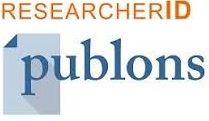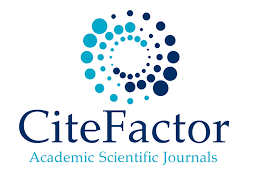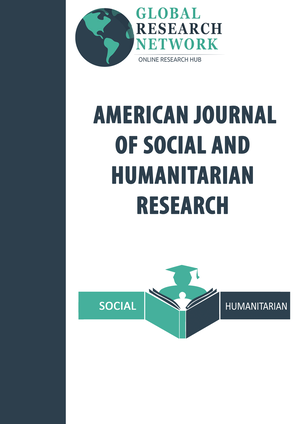Future Perspectives On The Diagnosis And Management Of Neonatal Bacterial Sepsis: Overcoming Current Challenges In Clinical Practice: Review
Abstract
Keywords
Full Text:
PDFReferences
- Fleischmann-Struzek, Carolin, et al. "The global burden of paediatric and neonatal sepsis: a systematic review." The Lancet Respiratory Medicine 6.3 (2018): 223-230.
- Weiss, Scott L., et al. "Global epidemiology of pediatric severe sepsis: the sepsis prevalence, outcomes, and therapies study." American journal of respiratory and critical care medicine 191.10 (2015): 1147-1157.
- Alshaikh, B., K. Yusuf, and R. Sauve. "Neurodevelopmental outcomes of very low birth weight infants with neonatal sepsis: systematic review and meta-analysis." Journal of Perinatology 33.7 (2013): 558-564.
- Horbar, Jeffrey D., et al. "Trends in Mortality and Morbidities for Infants Born 24 to 28 Weeks in the US: 1997–2021." Pediatrics 153.1 (2024): e2023064153.
- Jacob, Jack, et al. "Etiologies of NICU deaths." Pediatrics 135.1 (2015): e59-e65.
- Hayes, Rían, et al. "Neonatal sepsis definitions from randomised clinical trials." Pediatric research 93.5 (2023): 1141-1148.
- Falciglia, Gustave, et al. "Antibiotic therapy and early onset sepsis." Neoreviews 13.2 (2012): e86-e93.
- Coggins, Sarah A., and Kirsten Glaser. "Updates in late-onset sepsis: risk assessment, therapy, and outcomes." Neoreviews 23.11 (2022): 738-755.
- Boscarino, Giovanni, et al. "An overview of antibiotic therapy for early-and late-onset neonatal sepsis: Current strategies and future prospects." Antibiotics 13.3 (2024): 250.
- Giannoni, Eric, et al. "Neonatal sepsis of early onset, and hospital-acquired and community-acquired late onset: a prospective population-based cohort study." The Journal of pediatrics 201 (2018): 106-114.
- Glaser, Margaret A., et al. "Neonatal sepsis: a review of pathophysiology and current management strategies." Advances in neonatal care 21.1 (2021): 49-60.
- Schrag, Stephanie J., et al. "Epidemiology of invasive early-onset neonatal sepsis, 2005 to 2014." Pediatrics 138.6 (2016).
- Flannery, Dustin D., and Karen M. Puopolo. "Neonatal early-onset sepsis." Neoreviews 23.11 (2022): 756-770.
- Nanduri, Srinivas Acharya, et al. "Epidemiology of invasive early-onset and late-onset group B streptococcal disease in the United States, 2006 to 2015: multistate laboratory and population-based surveillance." JAMA pediatrics 173.3 (2019): 224-233.
- Berardi, Alberto, et al. "Group B Streptococcus early-onset disease and observation of well-appearing newborns." PLoS One 14.3 (2019): e0212784.
- Nishihara, Yo, et al. "Challenges in reducing group B Streptococcus disease in African settings." Archives of disease in childhood 102.1 (2017): 72-77.
- Dangor, Ziyaad, et al. "Early-onset group B streptococcal disease in African countries and maternal vaccination strategies." Frontiers in Public Health 11 (2023): 1214844.
- Russell, Neal, et al. "Early-versus late-onset sepsis in neonates–time to shift the paradigm?." Clinical microbiology and infection 30.1 (2024): 38-43.
- Stoll, Barbara J., et al. "Early-onset neonatal sepsis 2015 to 2017, the rise of Escherichia coli, and the need for novel prevention strategies." JAMA pediatrics 174.7 (2020): e200593-e200593.
- Li, Weizhong, et al. "Vertical transmission of gut microbiome and antimicrobial resistance genes in infants exposed to antibiotics at birth." The Journal of Infectious Diseases 224.7 (2021): 1236-1246.
- Stoll, Barbara J., et al. "Trends in care practices, morbidity, and mortality of extremely preterm neonates, 1993-2012." Jama 314.10 (2015): 1039-1051.
- Flannery, Dustin D., et al. "Early-onset sepsis among very preterm infants." Pediatrics 148.4 (2021).
- Stoll, Barbara J., et al. "Very low birth weight preterm infants with early onset neonatal sepsis: the predominance of gram-negative infections continues in the National Institute of Child Health and Human Development Neonatal Research Network, 2002–2003." The Pediatric infectious disease journal 24.7 (2005): 635-639.
- Pammi, Mohan, and Leonard E. Weisman. "Late-onset sepsis in preterm infants: update on strategies for therapy and prevention." Expert review of anti-infective therapy 13.4 (2015): 487-504.
- Gonçalves, Bronner P., et al. "Group B streptococcus infection during pregnancy and infancy: estimates of regional and global burden." The Lancet Global Health 10.6 (2022): e807-e819.
- McGovern, Matthew, et al. "Challenges in developing a consensus definition of neonatal sepsis." Pediatric research 88.1 (2020): 14-26.
- Guo, Liyan, et al. "Perinatal risk factors for neonatal early-onset sepsis: a meta-analysis of observational studies." The Journal of Maternal-Fetal & Neonatal Medicine 36.2 (2023): 2259049.
- Mukhopadhyay, Sagori, Eric C. Eichenwald, and Karen M. Puopolo. "Neonatal early-onset sepsis evaluations among well-appearing infants: projected impact of changes in CDC GBS guidelines." Journal of perinatology 33.3 (2013): 198-205.
- Vaccina, E., et al. "Brief comments on three existing approaches for managing neonates at risk of early-onset sepsis." Italian Journal of Pediatrics 47 (2021): 1-5.
- Infections, Surgical Site. "Prevention and Treatment." NICE Guideline [NG125] Published 11 (2019).
- Achten, Niek B., et al. "Association of use of the neonatal early-onset sepsis calculator with reduction in antibiotic therapy and safety: a systematic review and meta-analysis." JAMA pediatrics 173.11 (2019): 1032-1040.
- van der Weijden, Bo M., et al. "Neonatal early‐onset sepsis calculator recommended significantly less empiric antibiotic treatment than national guidelines." Acta Paediatrica (Oslo, Norway: 1992) 109.12 (2020): 2549.
- Berardi, Alberto, et al. "Should we give antibiotics to neonates with mild non-progressive symptoms? A comparison of serial clinical observation and the neonatal sepsis risk calculator." Frontiers in Pediatrics 10 (2022): 882416.
- Shane, Andi L., Pablo J. Sánchez, and Barbara J. Stoll. "Neonatal sepsis." The lancet 390.10104 (2017): 1770-1780.
- Singer, Mervyn, et al. "The third international consensus definitions for sepsis and septic shock (Sepsis-3)." Jama 315.8 (2016): 801-810.
- Wynn, James L., and Richard A. Polin. "A neonatal sequential organ failure assessment score predicts mortality to late-onset sepsis in preterm very low birth weight infants." Pediatric research 88.1 (2020): 85-90.
- Wynn, James L., and Richard A. Polin. "A neonatal sequential organ failure assessment score predicts mortality to late-onset sepsis in preterm very low birth weight infants." Pediatric research 88.1 (2020): 85-90.
- Russell, Neal J., et al. "Patterns of antibiotic use, pathogens, and prediction of mortality in hospitalized neonates and young infants with sepsis: a global neonatal sepsis observational cohort study (NeoOBS)." PLoS medicine 20.6 (2023): e1004179.
- Fleiss, Noa, et al. "Evaluation of the neonatal sequential organ failure assessment and mortality risk in preterm infants with late-onset infection." JAMA network open 4.2 (2021): e2036518-e2036518.
- Poggi, Chiara, et al. "Prognostic accuracy of Neonatal SOFA score versus SIRS criteria in preterm infants with late-onset sepsis." European Journal of Pediatrics 182.10 (2023): 4731-4739.
- Huber, S., et al. "The correct blood volume for paediatric blood cultures: a conundrum?." Clinical Microbiology and Infection 26.2 (2020): 168-173.
- Woodford, Emily C., et al. "Neonatal blood culture inoculant volume: feasibility and challenges." Pediatric research 90.5 (2021): 1086-1092.
- Cantey, Joseph B., and Pablo J. Sánchez. "Prolonged antibiotic therapy for “culture-negative” sepsis in preterm infants: it’s time to stop!." The Journal of pediatrics 159.5 (2011): 707-708.
- De Rose, Domenico Umberto, et al. "Stop in Time: how to reduce unnecessary antibiotics in newborns with late-onset Sepsis in neonatal intensive care." Tropical Medicine and Infectious Disease 9.3 (2024): 63.
- Tomar, Priya, et al. "Simultaneous two-site blood culture for diagnosis of neonatal sepsis." Indian pediatrics 54 (2017): 199-203.
- Coggins, Sarah A., Mary Catherine Harris, and Lakshmi Srinivasan. "Dual-site blood culture yield and time to positivity in neonatal late-onset sepsis." Archives of Disease in Childhood
- Hajjar, Nicole, et al. "Blood culture collection practices in NICU; A national survey." Paediatrics & Child Health 28.3 (2023): 166-171.
- Gottschalk, Amanda, et al. "Utility of anaerobic blood cultures in neonatal sepsis evaluation." Journal of the Pediatric Infectious Diseases Society 13.8 (2024): 406-412.
- Marks, Lucinda, Koert de Waal, and John K. Ferguson. "Time to positive blood culture in early onset neonatal sepsis: a retrospective clinical study and review of the literature." Journal of paediatrics and child health 56.9 (2020): 1371-1375.
- Kuzniewicz, Michael W., et al. "Time to positivity of neonatal blood cultures for early-onset sepsis." The Pediatric infectious disease journal 39.7 (2020): 634-640.
- De Rose, Domenico Umberto, et al. "Time to positivity of blood cultures could inform decisions on antibiotics administration in neonatal early-onset sepsis." Antibiotics 10.2 (2021): 123.
- Mukhopadhyay, Sagori, et al. "Time to positivity of blood cultures in neonatal late-onset bacteraemia." Archives of Disease in Childhood-Fetal and Neonatal Edition 107.6 (2022): 583-588.
- Arias-Felipe, Ana, et al. "Determining time to positivity of blood cultures in a neonatal unit." Journal of the Pediatric Infectious Diseases Society 11.11 (2022): 510-513.
- Oeser, C., et al. "Neonatal invasive fungal infection in England 2004–2010." Clinical Microbiology and Infection 20.9 (2014): 936-941.
- Peri, Anna Maria, et al. "Performance of BioFire Blood Culture Identification 2 Panel (BCID2) for the detection of bloodstream pathogens and their associated resistance markers: a systematic review and meta-analysis of diagnostic test accuracy studies." BMC Infectious Diseases 22.1 (2022): 794.
- Graff, Kelly E., et al. "Clinical impact of the expanded BioFire Blood Culture Identification 2 panel in a US children’s hospital." Microbiology Spectrum 9.1 (2021): 10-1128.
- Graff, Kelly E., et al. "Clinical impact of the expanded BioFire Blood Culture Identification 2 panel in a US children’s hospital." Microbiology Spectrum 9.1 (2021): 10-1128.
- Messacar, Kevin, et al. "Clinical impact and provider acceptability of real-time antimicrobial stewardship decision support for rapid diagnostics in children with positive blood culture results." Journal of the Pediatric Infectious Diseases Society 6.3 (2017): 267-274.
- Lucignano B., Cento V., Agosta M., Ambrogi F., Albitar-Nehme S., Mancinelli L., Mattana G., Onori M., Galaverna F., Di Chiara L., et al. Effective Rapid Diagnosis of Bacterial and Fungal Bloodstream Infections by T2 Magnetic Resonance Technology in the Pediatric Population. J. Clin. Microbiol. 2022;60:e00292-22. doi: 10.1128/jcm.00292-22.
- Schmatz, Melissa, et al. "Surviving sepsis in a referral neonatal intensive care unit: association between time to antibiotic administration and in-hospital outcomes." The Journal of Pediatrics 217 (2020): 59-65.
- Prusakov, Pavel, et al. "A global point prevalence survey of antimicrobial use in neonatal intensive care units: The no-more-antibiotics and resistance (NO-MAS-R) study." EClinicalMedicine 32 (2021).
- But, Špela, Brigita Celar, and Petja Fister. "Tackling Neonatal Sepsis—Can It Be Predicted?." International Journal of Environmental Research and Public Health 20.4 (2023): 3644.
- Boscarino, Giovanni, et al. "Biomarkers of neonatal sepsis: where we are and where we are going." Antibiotics 12.8 (2023): 1233.
- Dong, Ying, and Christian P. Speer. "Late-onset neonatal sepsis: recent developments." Archives of Disease in Childhood-Fetal and Neonatal Edition 100.3 (2015): F257-F263.
- Cantey, Joseph B., and John H. Lee. "Biomarkers for the diagnosis of neonatal sepsis." Clinics in perinatology 48.2 (2021): 215-227.
- Maddaloni, Chiara, et al. "The emerging role of presepsin (P-SEP) in the diagnosis of sepsis in the critically ill infant: a literature review." International journal of molecular sciences 22.22 (2021): 12154.
- Maddaloni, Chiara, et al. "Perinatal asphyxia does not influence presepsin levels in neonates: a prospective study." Acta Paediatrica 113.3 (2024): 453-460.
- Stocker, Martin, and Eric Giannoni. "Game changer or gimmick: inflammatory markers to guide antibiotic treatment decisions in neonatal early-onset sepsis." Clinical Microbiology and Infection 30.1 (2024): 22-27.
- van Leeuwen, Lisanne M., et al. "Diagnostic value of maternal, cord blood and neonatal biomarkers for early onset sepsis: a systematic review and meta-analysis." Clinical Microbiology and Infection (2024).
- Brown, Jennifer Valeska Elli, et al. "Assessment of C-reactive protein diagnostic test accuracy for late-onset infection in newborn infants: a systematic review and meta-analysis." JAMA pediatrics 174.3 (2020): 260-268.
- Stocker, Martin, et al. "Procalcitonin-guided decision making for duration of antibiotic therapy in neonates with suspected early-onset sepsis: a multicentre, randomised controlled trial (NeoPIns)." The Lancet 390.10097 (2017): 871-881.
- Meem, Mahbuba, et al. "Biomarkers for diagnosis of neonatal infections: A systematic analysis of their potential as a point-of-care diagnostics." Journal of global health 1.2 (2011): 201.
- Aloisio, Elena, Alberto Dolci, and Mauro Panteghini. "Procalcitonin: Between evidence and critical issues." Clinica chimica acta 496 (2019): 7-12.
- Poggi, Chiara, et al. "Presepsin for the detection of late-onset sepsis in preterm newborns." Pediatrics 135.1 (2015): 68-75.
- Rayan, Jehan. "Presepsin as an early reliable diagnostic and prognostic marker of neonatal sepsis." International Journal 4.6 (2016): 1538-1549.
- Miyosawa, Yukihide, et al. "Presepsin as a predictor of positive blood culture in suspected neonatal sepsis." Pediatrics International 60.2 (2018): 157-161.
- Von Groote, Thilo, and Melanie Meersch-Dini. "Biomarkers for the Prediction and Judgement of Sepsis and Sepsis Complications: A Step towards precision medicine?." Journal of Clinical Medicine 11.19 (2022): 5782.
- Pierrakos, Charalampos, et al. "Biomarkers of sepsis: time for a reappraisal." Critical Care 24 (2020): 1-15.
- Sanz Codina, Maria, and Markus Zeitlinger. "Biomarkers predicting tissue pharmacokinetics of antimicrobials in sepsis: a review." Clinical Pharmacokinetics 61.5 (2022): 593-617.
- Póvoa, Pedro, et al. "How to use biomarkers of infection or sepsis at the bedside: guide to clinicians." Intensive care medicine 49.2 (2023): 142-153.
- Hung, Shang-Kai, et al. "Current evidence and limitation of biomarkers for detecting sepsis and systemic infection." Biomedicines 8.11 (2020): 494.
- Kim, Mi-Hee, and Jung-Hyun Choi. "An update on sepsis biomarkers." Infection & chemotherapy 52.1 (2020): 1.
- Barichello, Tatiana, et al. "Biomarkers for sepsis: more than just fever and leukocytosis—a narrative review." Critical care 26.1 (2022): 14.
- Kang, Rui, et al. "HMGB1 in health and disease." Molecular aspects of medicine 40 (2014): 1-116.
- Lu, Bin, et al. "The utility of presepsin in diagnosis and risk stratification for the emergency patients with sepsis." The American Journal of Emergency Medicine 36.8 (2018): 1341-1345.
- Xiao, Hongli, et al. "Potential value of presepsin guidance in shortening antibiotic therapy in septic patients: a multicenter, prospective cohort trial." Shock 57.1 (2022): 63-71.
- Patnaik, Rupali, Afzal Azim, and Vikas Agarwal. "Neutrophil CD64 a diagnostic and prognostic marker of sepsis in adult critically ill patients: A brief review." Indian journal of critical care medicine: peer-reviewed, official publication of Indian Society of Critical Care Medicine 24.12 (20Sanger, Heinz L., et al. "Viroids are single-stranded covalently closed circular RNA molecules existing as highly base-paired rod-like structures." Proceedings of the National Academy of Sciences 73.11 (1976): 3852-3856.20): 1242.
- Cao, Changlin, Jingxian Gu, and Jingyao Zhang. "Soluble triggering receptor expressed on myeloid cell-1 (sTREM-1): a potential biomarker for the diagnosis of infectious diseases." Frontiers of medicine 11 (2017): 169-177.
- Sanger, Heinz L., et al. "Viroids are single-stranded covalently closed circular RNA molecules existing as highly base-paired rod-like structures." Proceedings of the National Academy of Sciences 73.11 (1976): 3852-3856.
- Feng, Kaixuan, et al. "Knockdown of lncRNA-ASLNC12002 alleviates epithelial–mesenchymal transition of type II alveolar epithelial cells in sepsis-induced acute respiratory distress syndrome." Human cell 36.2 (2023): 568-582.
-
- Cao, Changlin, Jingxian Gu, and Jingyao Zhang. "Soluble triggering receptor expressed on myeloid cell-1 (sTREM-1): a potential biomarker for the diagnosis of infectious diseases." Frontiers of medicine 11 (2017): 169-177.
- Garrido, Felipe, et al. "Variations in antibiotic use and sepsis management in neonatal intensive care units: a European Survey." Antibiotics 10.9 (2021): 1046.
- Adams, Mark, and Dirk Bassler. "Practice variations and rates of late onset sepsis and necrotizing enterocolitis in very preterm born infants, a review." Translational pediatrics 8.3 (2019): 212.
- Litz, Jana E., et al. "Management of early-and late-onset sepsis: results from a survey in 80 German NICUs." Infection 47 (2019): 557-564.
- Poggi, Chiara, and Carlo Dani. "New antimicrobials for the treatment of neonatal sepsis caused by multi-drug-resistant bacteria: a systematic review." Antibiotics 12.6 (2023): 956.
- Gominet, Marie, et al. "Central venous catheters and biofilms: where do we stand in 2017?." Apmis 125.4 (2017): 365-375.
- Mermel, Leonard A., et al. "Clinical practice guidelines for the diagnosis and management of intravascular catheter-related infection: 2009 Update by the Infectious Diseases Society of America." Clinical infectious diseases 49.1 (2009): 1-45.
- Piersigilli, Fiammetta, et al. "Use of meropenem and other antimicrobial lock therapy in the treatment of catheter-related blood stream infections in neonates: a retrospective study." Children 9.5 (2022): 614.
- Savarese, Immacolata, et al. "Use of 2% taurolidine lock solution for treatment and prevention of catheter-related bloodstream infections in neonates: a feasibility study." Journal of Hospital Infection 143 (2024): 76-81.
- Esposito, Susanna, and Nicola Principi. "Adjunctive therapy to treat neonatal sepsis." Expert review of clinical pharmacology 13.1 (2020): 65-73.
- Alejandria, Marissa M., et al. "Intravenous immunoglobulin for treating sepsis, severe sepsis and septic shock." Cochrane Database of Systematic Reviews 9 (2013).
- Savarese, Immacolata, et al. "Use of 2% taurolidine lock solution for treatment and prevention of catheter-related bloodstream infections in neonates: a feasibility study." Journal of Hospital Infection 143 (2024): 76-81.
- Nassir, Kawthar F., et al. "Pentaglobin (immunoglobulin M-enriched immunoglobulin) as adjuvant therapy for premature and very low-birth-weight neonates with sepsis." Indian journal of pharmacology 53.5 (2021): 364-370.
- O’Reilly, Daniel, et al. "Platelets in pediatric and neonatal sepsis: novel mediators of the inflammatory cascade." Pediatric Research 91.2 (2022): 359-367.
- Curley, Anna, et al. "Randomized trial of platelet-transfusion thresholds in neonates." New England Journal of Medicine 380.3 (2019): 242-251.
- Mathias, Sitarah, et al. "The effect of exchange transfusion on mortality in neonatal sepsis: A meta-analysis." European Journal of Pediatrics (2022): 1-13.
- Fairchild, Karen D., and T. Michael O'Shea. "Heart rate characteristics: physiomarkers for detection of late-onset neonatal sepsis." Clinics in perinatology 37.3 (2010): 581-598.
- Rio, Laura, et al. "Monitoring of heart rate characteristics to detect neonatal sepsis." Pediatric Research 92.4 (2022): 1070-1074.
- Hicks, Jamie H., and Karen D. Fairchild. "Heart rate characteristics in the NICU: what nurses need to know." Advances in Neonatal Care 13.6 (2013): 396-401.
- Moorman, Joseph Randall, et al. "Mortality reduction by heart rate characteristic monitoring in very low birth weight neonates: a randomized trial." The Journal of pediatrics 159.6 (2011): 900-906.
- Fairchild, Karen D. "Predictive monitoring for early detection of sepsis in neonatal ICU patients." Current opinion in pediatrics 25.2 (2013): 172-179.
- Zeigler, Angela C., et al. "Sepsis and mortality prediction in very low birth weight infants: analysis of HeRO and nSOFA." American journal of perinatology 40.04 (2023): 407-414.
- Pugnaloni, Flaminia, et al. "Assessment of hemodynamic dysfunction in septic newborns by functional echocardiography: a systematic review." Pediatric Research 95.6 (2024): 1422-1431.
- Sullivan, Brynne A., Sherry L. Kausch, and Karen D. Fairchild. "Artificial and human intelligence for early identification of neonatal sepsis." Pediatric research 93.2 (2023): 350-356.
- Stocker, Martin, et al. "Machine learning used to compare the diagnostic accuracy of risk factors, clinical signs and biomarkers and to develop a new prediction model for neonatal early-onset sepsis." The Pediatric Infectious Disease Journal 41.3 (2022): 248-254.
DOI: http://dx.doi.org/10.52155/ijpsat.v51.1.7260
Refbacks
- There are currently no refbacks.
Copyright (c) 2025 Maged Naser

This work is licensed under a Creative Commons Attribution 4.0 International License.



















